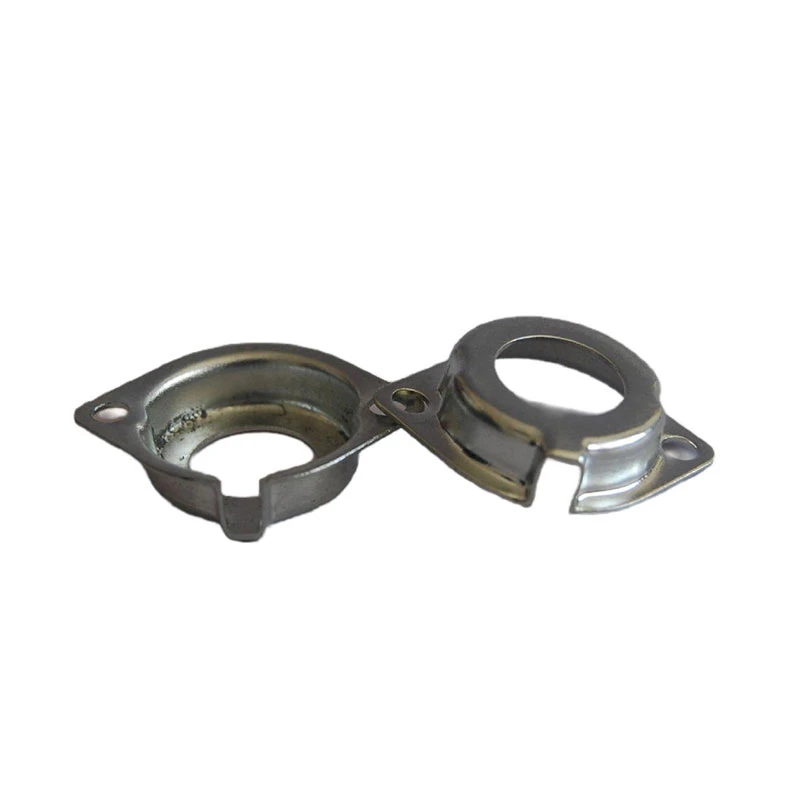Innovative Die Cast Rotor Design for Enhanced Performance and Durability
The Importance and Innovation of Die-Cast Rotors in Modern Engineering
Die-casting is a manufacturing process that has seen significant advancements over the years, particularly in the production of various components, including rotors. Die-cast rotors are becoming increasingly vital in numerous industries due to their excellent mechanical properties, cost-effectiveness, and design versatility. This article aims to explore the significance of die-cast rotors, their manufacturing process, applications, and the innovations that have propelled their popularity.
Understanding Die-Casting and Rotors
Die-casting is a method where molten metal is injected into a mold at high pressure, creating precise and complex shapes. This process is particularly suitable for non-ferrous metals, such as aluminum, zinc, and magnesium. The high-pressure injection ensures that the molds fill completely, resulting in products with minimal porosity and excellent surface finishes. Rotors, which are rotating components found in various machines, are crucial for their functionality, especially in electric motors, pumps, and turbines.
Advantages of Die-Cast Rotors
One of the primary advantages of using die-cast rotors is their dimensional accuracy. The die-casting process allows for tight tolerances, which is essential in applications where precision is critical. For example, in electric motors, even a slight misalignment can lead to inefficiencies, increased wear, and eventual failure.
Another significant benefit is the ability to produce complex geometries that would be challenging or impossible to achieve through traditional machining methods. This capability allows engineers to innovate and optimize rotor designs for better performance, including improved airflow dynamics for cooling purposes, weight reduction, and enhanced strength.
Cost-effectiveness is another key factor in the growing use of die-cast rotors. The ability to produce large quantities of components with minimal waste and reduced labor costs makes die-casting an attractive option for manufacturers. Additionally, the high production speeds associated with die-casting can lead to shorter lead times, enabling faster product launches and a quicker response to market demands.
Applications of Die-Cast Rotors
die cast rotor

Die-cast rotors are used in a wide array of applications across various industries. In the automotive sector, they are commonly found in electric vehicle (EV) motors, where lightweight yet strong components are essential for improving energy efficiency and extending driving range. The aerospace industry also relies on die-cast rotors for aircraft engines, where performance and weight play critical roles in overall efficiency.
Moreover, home appliances like washers and dryers employ die-cast rotors in their motors. The durability and reliability of these components are crucial for the performance of everyday household items.
Innovations Driving the Future
The innovation in die-cast rotor manufacturing is continuously evolving. Recent advancements include the use of advanced alloys and materials that offer improved performance characteristics. For instance, aluminum alloys with enhanced mechanical properties allow for lightweight designs without compromising strength.
Additive manufacturing techniques, such as 3D printing of molds, are also changing the landscape of die-casting. These new methods reduce lead times and costs associated with creating traditional molds, enabling rapid prototyping and experimentation with rotor designs.
Moreover, the integration of smart manufacturing technologies, such as IoT (Internet of Things), has enhanced the monitoring and control of the die-casting process, leading to better quality assurance and optimized production.
Conclusion
Die-cast rotors have established themselves as indispensable components in modern engineering across various sectors. Their ability to combine precision, complexity, and cost-effectiveness makes them an ideal choice for many applications. As the industry continues to innovate and embrace new technologies, the future of die-cast rotors looks promising, paving the way for even more advancements in efficiency and performance across a range of applications.
-
Precision Casting AI Solution with GPT-4-Turbo | Optimized QualityNewsAug.02,2025
-
Precision Sheet Metal Stamping Manufacturer | Fast & ReliableNewsAug.01,2025
-
OEM Sand Cast Pump Valve Fittings - Baoding Hairun Machinery And Equipment Trading Co., Ltd.NewsAug.01,2025
-
Custom OEM Impellers | High Efficiency & PrecisionNewsAug.01,2025
-
OEM Sand Cast Pump Valve Fittings - Baoding Hairun Machinery | Customization, Quality AssuranceNewsAug.01,2025
-
OEM Sand Cast Pump Valve Fittings - Baoding Hairun Machinery And Equipment Trading Co., Ltd.NewsAug.01,2025















